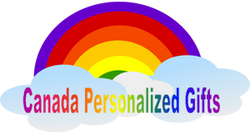
-
NATALIA KUCIRKOVA: My name is Natalia Kucirkova.I'm currently working at the Open University in England. In this video, I'll tell you about a study that was published by First Language in 2014. In the study, we had 18 three-year-old children who were read personalized books in two locations. There were two conditions-- personalized books
-
NATALIA KUCIRKOVA [continued]: and non-personalized books. What we did for the personalized books was to closely collaborate with children's parents, so that we can learn more about children's likes and dislikes, what to do like to do in their free time, what they eat for breakfast, what are the names of their friends. And we inserted this information in the personalized sections
-
NATALIA KUCIRKOVA [continued]: of the books. We then closely matched the personalized content with the non-personalized books, so that we can look at how well children learn new words embedded in these two sections of the same book. Children were read the books on two occasions. And we tested their knowledge of the new words using a picture
-
NATALIA KUCIRKOVA [continued]: comprehension test, a definition test, and an emotional valence test. What we found was that children acquired more new words that appeared in the personalized sections of the book compared to non-personalized sections. Hence, personalization can make a difference to children's word acquisition.

